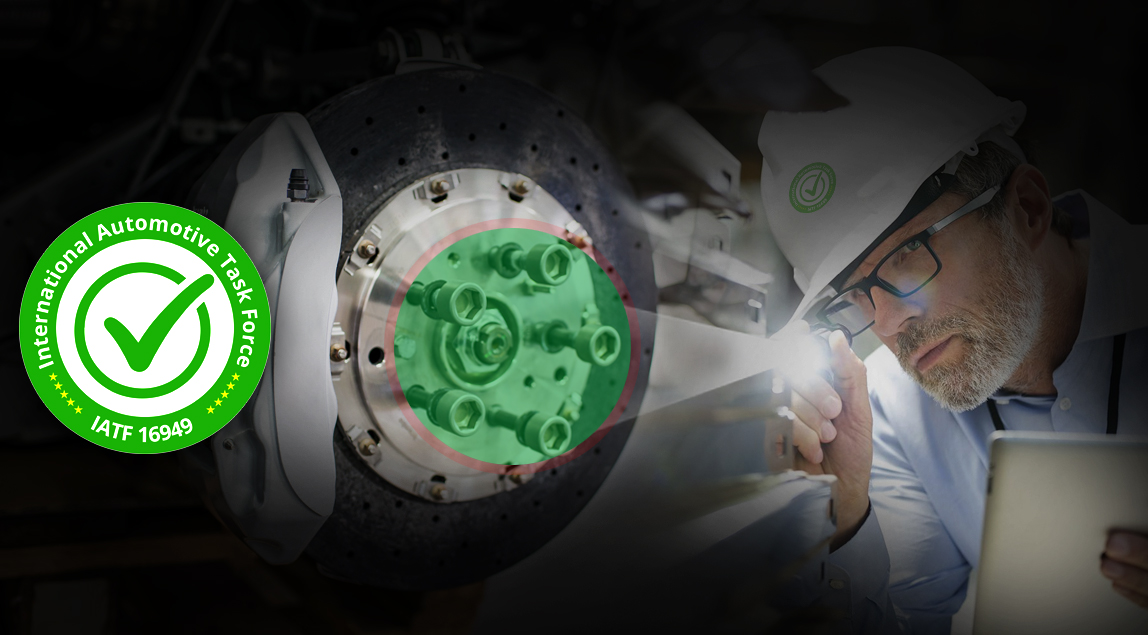IATF 16949: A Brief Overview
Defining IATF 16949
IATF 16949:2016 can be described as the International Standard for Automotive Quality Management Systems. The IATF 16949 was collectively constituted by the IATF members and presented to the International Organization for Standardization (ISO) for consent and notification. The report is a general automotive quality system specification that is based on ISO 9001 and customer-explicit elements from the automotive domain.
IATF 16949 features the evolution of a process-centric quality management system that caters to constant refinement, arresting flaws, and decreasing change and loss within the supply chain. The aim is to satisfy customer demands adequately and productively.
Who is IATF 16949 relevant to?
The regulation is applicable to any business that produces parts, equipment, and fittings for supply to the automotive business. In this setting, manufacturing is described as a method of building production supplies, assemblies, service parts, or heat treatment, such as welding, coating, plating, or different finishing services.
Why go with IATF 16949 instead of just ISO 16949?
The IATF 16949 is an innovative document created by IATF that grants excellent inclination to the customer, including several former vital customer-specific provisions. The IATF persists towards constant association with ISO by extending relationship committee status, thereby guaranteeing a systemic alliance with ISO 9001.
Advantages of IATF 16949 Certification
Customer Delight:
Release products that continuously satisfy customer demands and offer reliable services.
Diminished Cost of Operation:
The constant development of streamlined organizational procedures and the consequent operational effectiveness translate to huge saved costs.
Advanced Relationships:
Enhance the understanding and presence of your business and rationale with your personnel, clients, and suppliers.
Certified Business Credentials:
Self-governing verification against a globally identified industry-standard articulates great capacities.
Energy to Acquire Extra Business:
Acquirement specs usually need certification as a requirement to supply. Therefore, this certification throws open new opportunities.
Global Identification as a Trustworthy Supplier:
This certification is acknowledged universally and admitted everywhere in manufacturing supply chains, establishing industry yardsticks for sourcing suppliers.
The Required Steps to Complete Execution and Obtain Certification
Post the completion of all the required documentation and implementing it, your business also has to perform some additional actions to secure a flourishing certification:
Internal Audit:
This is the stage at which you are equipped to check your QMS procedures. The aim is to guarantee that your documents are spot on to validate compliance with the processes and detect loopholes that would otherwise stay buried.
Review by the Management:
A prescribed review by the management to assess the management system’s essential facts helps in framing informed decisions and rightly allocating the existing resources.
Remedial Operations:
Post the internal audit and management review, you have to fix the root cause of any classified problems and record how you have resolved them for future reference.
The company certification procedure is broken into two stages:
Documentation Evaluation: Stage I
The auditors from your preferred certification body will review to make sure that your documentation meets the terms of IATF 16949.
Primary Audit: Stage II
At this stage, the auditors of the certification body will examine whether your on-ground operations are compliant with both IATF 16949 and your documentation by analyzing the submitted documents, reports, and company practices.
Finally, the essential objective of the IATF 16949 standard is to strengthen your existing systems, process their quality further in order to promote customer satisfaction and easily identify risks and hazards in the production process and supply chain. Further, it aims to eradicate the causes of such threats and analyze and adopt corrective and preventive stratagems for their better performance. The pretext is not to discover mistakes but to avoid them in the first place.
